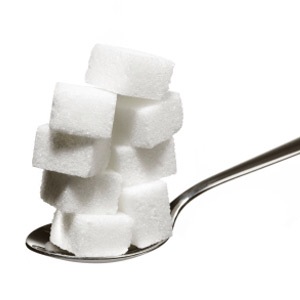According to SugarScience.org, an initiative to bring information on food and drink and added sugar to the public, it just may be. The initiative was developed by a group of health science experts from the University of California, San Fransisco (UCSF). The group has reviewed more than 8,000 scientific papers that show a strong link between the consumption of added sugar and chronic diseases, specifically, diabetes, heart disease and liver disease.
Laura Schmidt, a lead investigator on the SugarScience project has said the idea is to make the findings comprehensible and clear to everyone. Added sugars, says Schmidt, are sugars that don’t occur naturally in foods. They are found in 74 percent of all packaged foods, have 61 names – such cane syrup, molasses, and raw sugar – and often are difficult to decipher on food labels.
Although the U.S. Food and Drug Administration requires food companies to list ingredients on packaging, there is no differentiation between natural and added sugars, which makes making healthier, lower-sugar choices confusing and difficult.
According to SugarScience the average American consumes 19.5 teaspoons (78 grams) of sugar a day, substantially more than the amount recommended by the American Heart Association (AHA). The AHA recommendations for added sugars are: 6 teaspoons (24 grams) per day for women, 9 teaspoons (36 grams) per day for men, and 3-6 teaspoons (12-24 grams) per day for kids, depending on age. Just one 12-ounce soda contains 8 to 9 teaspoons (32-36 grams) of sugar.
Liquid sugar in sodas, energy drinks, sports drinks, and fruit drinks appear to contribute the most added sugar in the American diet. That represents 36 percent of all added sugars consumed, according to the Department of Health and Human Services. And because liquid does not include fiber, the body processes it quickly. That causes an overload of sugar to be sent to the pancreas and liver which neither can process properly, and the resulting buildup of sugar leads to heart disease, diabetes and liver disease.
Consuming too much sugar causes the level of sugar or glucose in the bloodstream to increase. That, in turn, causes the pancreas to release high levels of insulin that cause the body to store extra calories as fat.
High levels of insulin also affect the hormone leptin, which is a natural appetite suppressant that signals the brain to stop eating when we are full. The imbalance of insulin levels caused by the intake of too much sugar causes the brain to no longer get that fullness signal.
So, what do you eat when 74%of all packaged foods have sugar added to them? Stick to real foods found in nature most of the time instead of processed packaged stuff. When you do buy packaged products be informed, read food labels and ingredients. The closer sugar (or one of its many aliases mentioned above) is to the top of the ingredient list, the more prevalent it is in the product.
Be especially mindful of bottled and canned drinks, even seemingly healthy ones can be loaded with sugar. One green tea soy latte bottled drink I looked at in the grocery store had 48 grams of sugar for the 2 serving bottle. That’s 12 teaspoons of sugar – 1 teaspoon is equal to 4 grams of sugar – and cane sugar was third on the ingredient list.
By being a savvy shopper and making smart choices you can cut out a lot of added sugars that you don’t need and that could be negatively impacting your health.


0 Comments